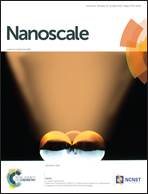Biochemistry-directed hollow porous microspheres: bottom-up self-assembled polyanion-based cathodes for sodium ion batteries†
Abstract
Biochemistry-directed synthesis of functional nanomaterials has attracted great interest in energy storage, catalysis and other applications. The unique ability of biological systems to guide molecule self-assembling facilitates the construction of distinctive architectures with desirable physicochemical characteristics. Herein, we report a biochemistry-directed “bottom-up” approach to construct hollow porous microspheres of polyanion materials for sodium ion batteries. Two kinds of polyanions, i.e. Na3V2(PO4)3 and Na3.12Fe2.44(P2O7)2, are employed as cases in this study. The microalgae cell realizes the formation of a spherical “bottom” bio-precursor. Its tiny core is subjected to destruction and its tough shell tends to carbonize upon calcination, resulting in the hollow porous microspheres for the “top” product. The nanoscale crystals of the polyanion materials are tightly enwrapped by the highly-conductive framework in the hollow microsphere, resulting in the hierarchical nano-microstructure. The whole formation process is disclosed as a “bottom-up” mechanism. Moreover, the biochemistry-directed self-assembly process is confirmed to play a crucial role in the construction of the final architecture. Taking advantage of the well-defined hollow-microsphere architecture, the abundant interior voids and the highly-conductive framework, polyanion materials show favourable sodium-intercalation kinetics. Both materials are capable of high-rate long-term cycling. After five hundred cycles at 20 C and 10 C, Na3V2(PO4)3 and Na3.12Fe2.44(P2O7)2 retain 96.2% and 93.1% of the initial capacity, respectively. Therefore, the biochemistry-directed technique provides a low-cost, highly-efficient and widely applicable strategy to produce high-performance polyanion-based cathodes for sodium ion batteries.


 Please wait while we load your content...
Please wait while we load your content...